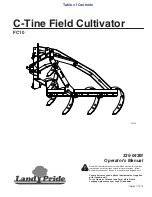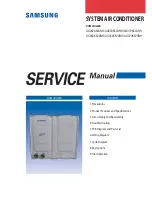
88-4YCA4001-1A-EN
21
Sequence of Operation
G
Ge
en
ne
erra
all
Operation of the system cooling (and optional heating)
cycles is controlled by the comfort control. Once the
comfort control is set to either H
HE
EA
AT
T or C
CO
OO
OL
L, unit
operation is automatic. The optional automatic
changeover control, when set to A
AU
UT
TO
O, automatically
changes to heat or cool with sufficient room
temperature change.
The fan can be set to O
ON
N, causing continuous
evaporator (indoor) fan operation or set to A
AU
UT
TO
O
causing fan operation to coincide with heating or
cooling run cycles. Continuous fan mode during
cooling operation may not be appropriate in humid
climates. If the indoor air exceeds 60% relative
humidity or simply feels uncomfortably humid, it is
recommended that the fan only be used in the A
AU
UT
TO
O
mode.
C
Co
oo
olliin
ng
g M
Mo
od
de
e
With the comfort control set to C
CO
OO
OL
L and the fan set to
A
AU
UT
TO
O, the compressor contactor (CC) and the indoor
fan motor (IDM) are energized.
The energized compressor contactor (CC) completes
the circuit to the compressor (CPR) and a secondary
circuit to the outdoor fan motor (ODM). If the
compressor safety controls are closed, the compressor
(CPR) will operate with the outdoor fan motor (ODM).
The indoor fan motor (IDM) will operate. The comfort
control will continue to cycle the compressor and fans
to maintain the desired temperature.
With the fan set to O
ON
N, the indoor fan motor (IDM) will
continue to run regardless of compressor and
condenser fan operation.
H
He
ea
attiin
ng
g C
Cy
ycclle
e
T
Th
he
errm
mo
osstta
att cca
allll ffo
orr h
he
ea
att
(R) and (W) thermostat contacts close signaling the
control module (IGN) to run its self-check routine. After
the control has verified that the pressure switch (PS)
contacts are open, the limit switch (TCO) contacts are
closed, and the flame rollout (RO) switch is closed, the
induced draft blower (CFM) will be energized.
After the induced draft blower (CFM) has come up to
speed, the control will verify that the pressure switch
(PS) contacts are closed and run the induced draft
blower for a 20 second pre-purge. The gas valve (GV) is
energized to permit gas flow and the spark ignitor (IP)
is energized. The flame detector (FD) confirms that
ignition has been achieved within the 7 second trial
period.
As the flame detector confirms that ignition has been
achieved the delay to indoor fan on period begins
timing and after approximately 45 seconds, the indoor
blower motor (IDM) will be energized and will continue
to run during the heating cycle.
T
Th
he
errm
mo
osstta
att ssa
attiissffiie
ed
d:
(R) and (W) contacts open signaling the control module
to close the gas valve and de-energize the induced draft
blower after approximately 5 seconds post-purge. The
indoor blower motor will continue to operate at the
current speed for 60 or 90 seconds (field selectable)
after the flames are extinguished.
S
Sa
affe
etty
y S
Se
eq
qu
ue
en
ncce
ess
This product is equipped with safety devices to protect
against abnormal conditions.
The temperature limit switch (TCO) is located on the
blower barrier, and can be accessed through the
blower compartment. This automatic reset device
protects against excessive leaving air temperature. If
this device opens, the gas valve is immediately closed
and will not permit operation until the limit switch
closes.
The rollout switch (RO) is located in the gas
compartment near the inlet of the burners. This is a
manual reset device designed to protect against any
form of flame rollout. If this device is opened the gas
valve is immediately de-energized and the control
(IGN) will lockout the system. The rollout switch (RO)
must be reset before operation is allowed to continue.
The pressure switch (PS) is located in the upper right
side of the gas compartment. This automatic device
assures adequate combustion air pressure. If pressure
against the induced draft blower outlet becomes
excessive, the pressure switch will react and shut off
the gas valve, until acceptable combustion pressure is
again available.
If the control (IGN) does not sense flame within the first
trial for ignition period, the gas valve will be de-
energized. The control (IGN) will initiate a 60 seconds
interpurge. Following the interpurge, the control will
perform a second ignition attempt. If the second try is
not successful, the control will start another 60 second
interpurge. After the interpurge, a third attempt will be
tried. If the third try is not successful, the control will
lock out.
If loss of flame occurs during a heating cycle, the
control (IGN) will close the gas valve and cycle through
the ignition trial as stated above.
If control lock out occurs, the control (IGN) will retry a
complete ignition sequence in 1 hour.
The control (IGN) can be reset by removing power to
the unit or by turning the thermostat from “on” to “off”
for approximately three seconds, then back “on”.








































